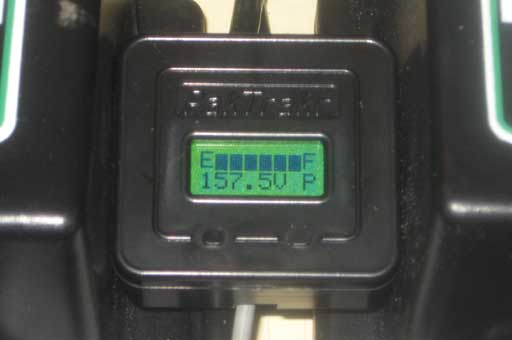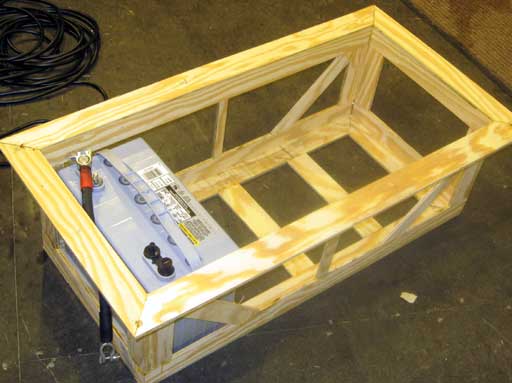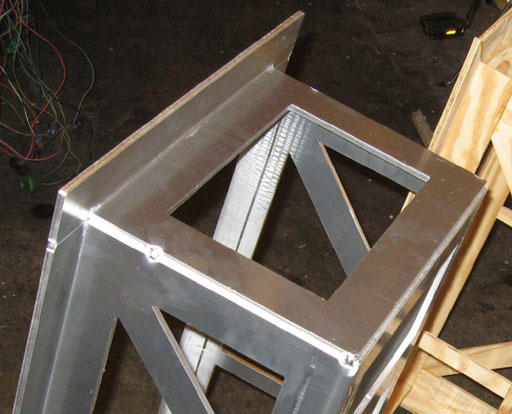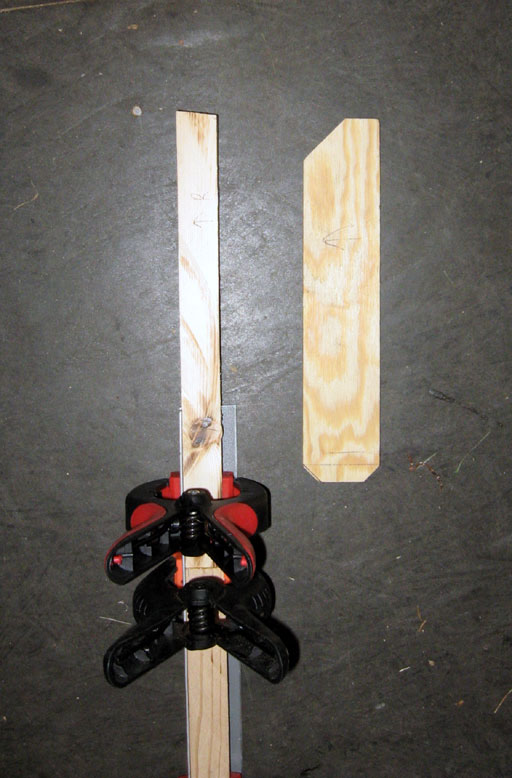Battery System
12 Group 27 Deka Dominators

The battery pack will be 12 Deka Dominators. Here all 12 batteries are connected in series
and also connected to the Dual Pro chargers and the PakTrakr. This is so a complete bench test of the electrical system can be done before anything goes into the car.
Since I don't plan on drawing a lot of current, 12 gauge wire was used to do the testing.
Yes, it's a bit of a bird's nest.
Since I don't plan on drawing a lot of current, 12 gauge wire was used to do the testing.
Yes, it's a bit of a bird's nest.
Chargers / Voltage monitoring

Each battery will be independently charged and monitored. Four Dual Pro Three Bank Pro SE chargers will do the charging and a PakTrakr with 2 remotes will monitor the voltage of each of the 12 batteries and the entire pack.
PakTrakr

The PakTrakr in action.
Removal of the spare tire well

19 April 2008 - The first battery box will go behind the rear axle. The spare tire well was cut out up to the frame of the car. Measurements are taken for this first battery box that will hold four of the twelve batteries.
Aluminum Stock for Battery Boxes

After consulting with a local welder/fabricator, the decision was made to use 1/4 in. 2x2 angle aluminum stock (right) for the battery boxes. To make the patterns for the boxes 1/4 in. plywood will be used, see sample of same stock made from plywood on left.
Gluing the Battery Box Patten

About 30 feet of 2x2 plywood pattern stock was made, the pattern was cut from the plywood stock and glued. You can never have too many clamps for this job. I have about ten and could use another six or so.
One Battery in the Pattern

I can't say enough about how important it is to make these wooden patterns. An AutoCAD drawing would be nice -- but, you can't pick it up, hold it, place it in the car and put the batteries in a drawing. This pattern was glued, cut and reglued several times before I considered it complete.
The Pattern in the Spare Tire Well

The left and right sides of the pattern will sit directly on top of the frame. As noted above, the spare tire well was removed by cutting the sheet metal back the the frame, without actually cutting the frame itself.
The diagonal pieces were added for stability when my wooden pattern seemed to be a bit wobbly and it also appeared that some support might be needed in the center of this box.
The diagonal pieces were added for stability when my wooden pattern seemed to be a bit wobbly and it also appeared that some support might be needed in the center of this box.
Penty of Ground Clearance Under the Car

This is exactly what the real box will look like underneath the car. There is little chance that this box will hit the ground.
The Real Thing

26 July 2008 - The fabricator and the aluminum supplier used my pattern to laser cut three pieces of aluminum and bend them to make this box. The end result will require much less welding, be much stronger and look a bit nicer. This is certainly not what I was expecting -- but, I am happy with the result. Knowing what can be done will be helpful when I design the pattern for the next boxes.
You can see that the aluminum box looks exactly like my original pattern.
This battery box weighs just over 20 lbs.
You can see that the aluminum box looks exactly like my original pattern.
This battery box weighs just over 20 lbs.
Tacked for a Test

The fabricator simply tacked the three pieces together so that I could bring it home and make sure everything looked good before he did the final welds.
Batteries in Place

The box fits nicely into the car and the batteries fit nicely into the box. The box is very sturdy, even though it has only been tacked in four places.
Battery Box #2

22 August 2008 - The second battery box will hold two batteries and go in front of the rear axle (behind the rear seats) -- where the bulky part of the gas tank was located. The first battery box has been removed and measurements are taken.
Making this pattern was much more challenging. Clamps were used to hold the partially constructed pattern in place so that more measurements could be taken.
Making this pattern was much more challenging. Clamps were used to hold the partially constructed pattern in place so that more measurements could be taken.

3 November 2008 - This box will be made from three laser cut pieces of 1/4" aluminum (same as the first box.) The main part of the unassembled box will be clamped in place so that final measurements can be taken for a steel support that will go under the box to support the front part of the box from the side frame of the car.

14 November 2008 - The support will be made of 1/8" square tube steel with ears on either side to bolt into the frame. The metal fabricator indicated that he would have no trouble making compound miter cuts accurate within 1 degree.